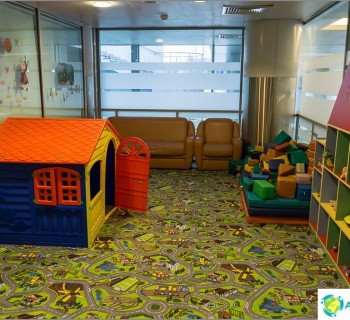One of the largest and most beautiful cities in the Czech Republic is its capital - Prague (Prague), located on both banks of the Vltava River. I have come to it several times already and am planning to visit it again, as I constantly find something new and interesting for myself..
The content of the article
- one Author's excursions
- 2 The main attractions of Prague
- 2.1 Prague Castle
- 2.2 The Charles Bridge
- 2.3 St. Vitus Cathedral
- 2.4 Old Town Square
- 2.5 Old town hall
- 2.6 Vysehrad
- 2.7 Petrin Hill and Eiffel Tower in Prague
- 2.8 Prague Zoo
- 2.9 Strahov Monastery
- 2.10 Josefov quarter
- 2.11 Dancing House
- 2.12 National Theater
- 2.13 Křižkov fountains
- 2.14 John Lennon Wall
- 2.15 Letné Gardens and Prague Metronome
- 3 Other sights of Prague
- 3.1 Wenceslas Square
- 3.2 Aquarium Sea World in Prague
- 3.3 Tyn temple
- 3.4 Kampa island
- 3.5 Mala Strana
- 3.6 Prague Loreta
- 3.7 Powder tower
- 3.8 Zlata street
- 3.9 Lego Museum
- 3.10 Toy Museum
- 3.11 Havel market
- 3.12 Charles Square
- 3.13 Kafka Museum
- 3.14 Church of St. Ludmila
- 3.15 Old royal palace
- 3.16 Hradcany
- 3.17 Old castle stairs
- 4 On the map
Author's excursions
For those who want to save time preparing for the trip and fully immerse themselves in the atmosphere and history of the city, I recommend using the services of an individual guide in Prague. In my opinion, individual excursions are much more interesting than organized excursions with their large number of people in a group, a monotonous announcer guide and a hackneyed program..
Moreover, with a private guide, you can always agree on a walk at a time convenient for you, and adjust the excursion along the way. Below I post a selection of quality guided tours. Take a look, you will definitely like one of the options. And above all, pay attention to the excursions «How to understand Prague» and «Courtyards and gateways of the Old Town».
I especially liked the second one because I love something hidden from the tourist crowds..
Excursions in Prague
The main attractions of Prague
In this post, I tried to collect more attractions for those who have arrived for a long time or have already been to Prague several times. I traveled most of them myself, a small part I took from the reviews. Now you have a wide variety of things to do. All attractions with names, descriptions and photos. Those who need the most basic sights, click on the button below.
TOP 15 places to see in Prague >>
Prague Castle
It is considered the largest preserved castle in the whole world. Due to its size, Prague Castle looks like a very small town. Some of the premises and objects were identified as cultural values and museums with collections of treasures were set up in them, and some got a more prosaic fate - to be office premises.
There are several buildings inside the castle, which in themselves are the top sights of Prague, which will take a lot of time to see. When you come to Prague, you need to be prepared for the fact that every two steps there is something important, historical, valuable or beautiful. You can't run fast. More about the attraction.
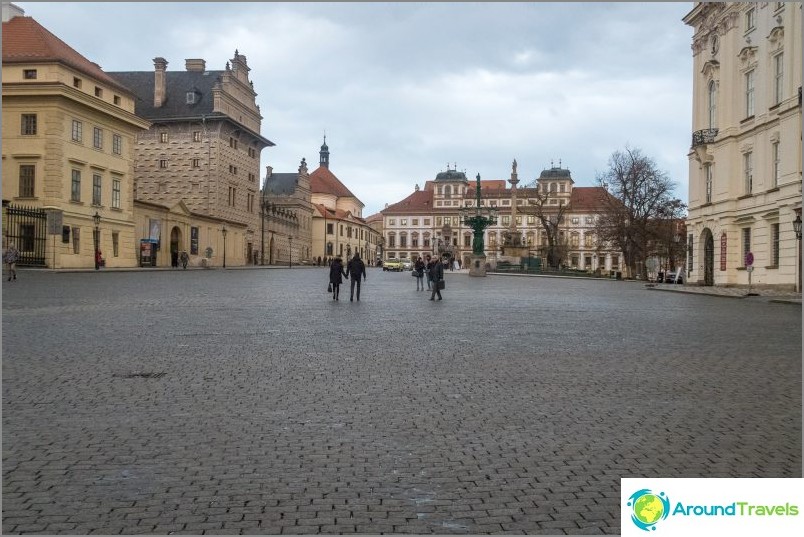
Hradcanska Square in Prague Castle
The Charles Bridge
First of all, it is necessary to highlight its distinctive symbols - stone bridges, of which there are 18 in the city, thrown from one bank of the Vltava to the other and, above all, Charles Bridge - the embodiment of medieval architecture. A must visit in any weather and in any mood.
In the sun, or in fog, during the rain or in winter, this place deserves its half an hour for a walk and photography. A cult landmark. If you haven't seen Charles Bridge, you haven't seen Prague either. More about the attraction.
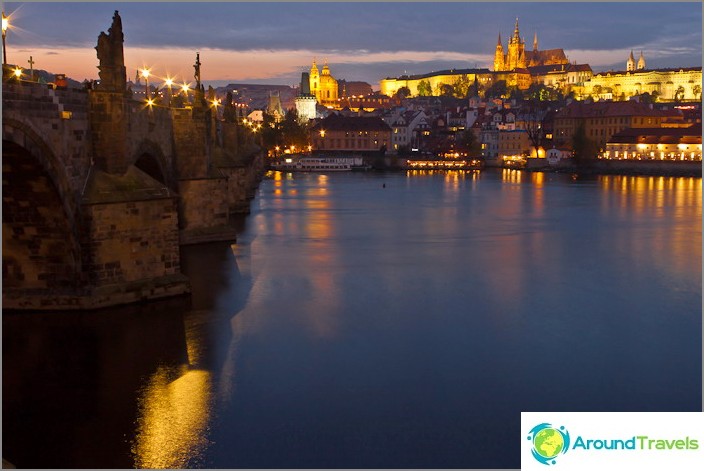
Prague city center, magical Prague Castle in the evening
St. Vitus Cathedral
A striking example of Gothic art is the Cathedral of St. Vitus, the construction of which lasted for almost six centuries in a row. This cathedral is an integral part of the Prague Castle (according to «Guinness book of records», the largest in the world). Today it serves as the seat of the Prague Archbishop. Also, regalia for the coronation are kept here. The cathedral is very popular with tourists and consistently occupies the top lines of attendance. More about the attraction.
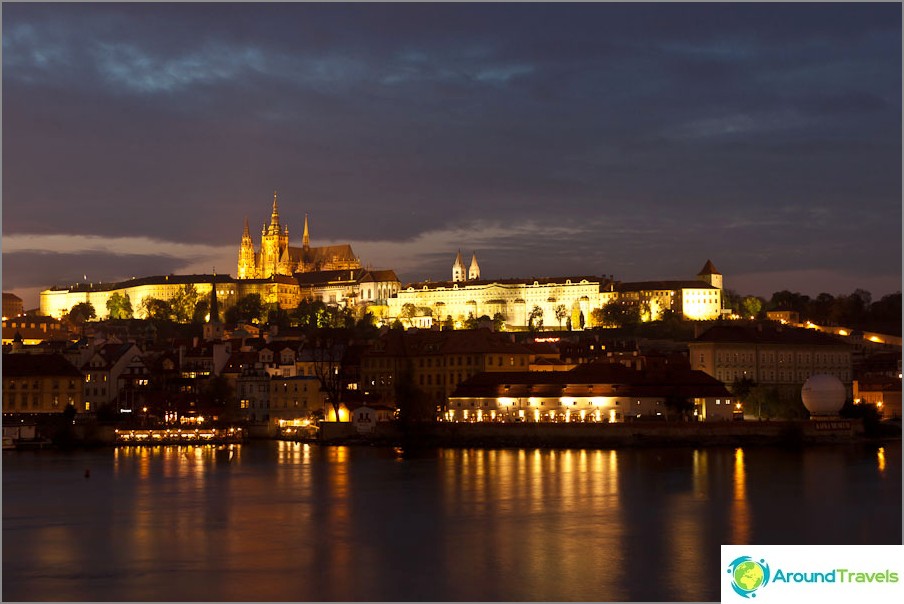
Evening Prague Castle in Prague.
Old Town Square
Old Town Square is one of the main attractions of Prague, which is definitely worth seeing live. It is considered the main square of Prague, where it has always been lively and noisy, since the 11th century, when the square was known throughout Europe as a market.
On the Old Town Square there are a lot of entertainment establishments, pubs, historical buildings, cafeterias and galleries, as well as one of the main tourist attractions - the astronomical clock on the tower of the Old Town Hall. More about the attraction.
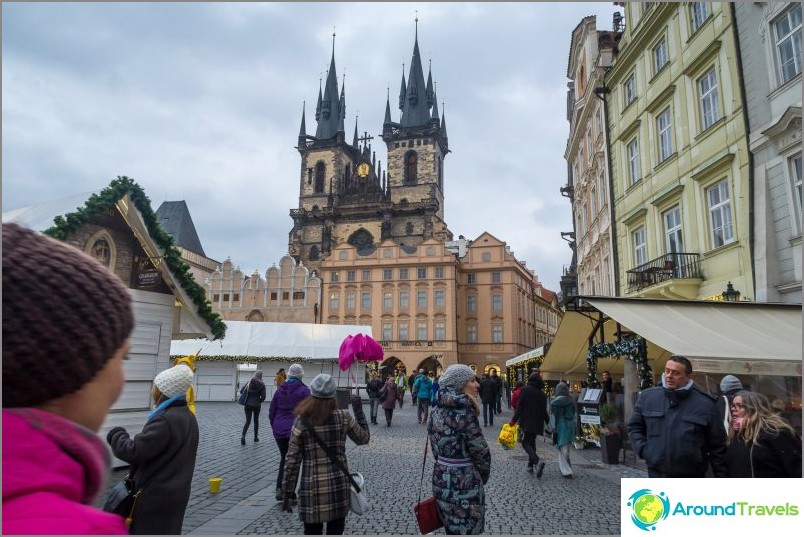
Old Town Square in Prague
Old town hall
The old town hall was built in 1338 (Russia was then still under the Mongol-Tatar yoke), was gradually completed over time, and in one of the towers of the town hall in 1410 an astronomical clock was installed, or as they are also called: «Prague chimes». The clock is considered a very complex mechanism of that time and every day, every hour from 9 to 21 o'clock, it entertains tourists with a short presentation of figures on the tower.. More about the attraction.
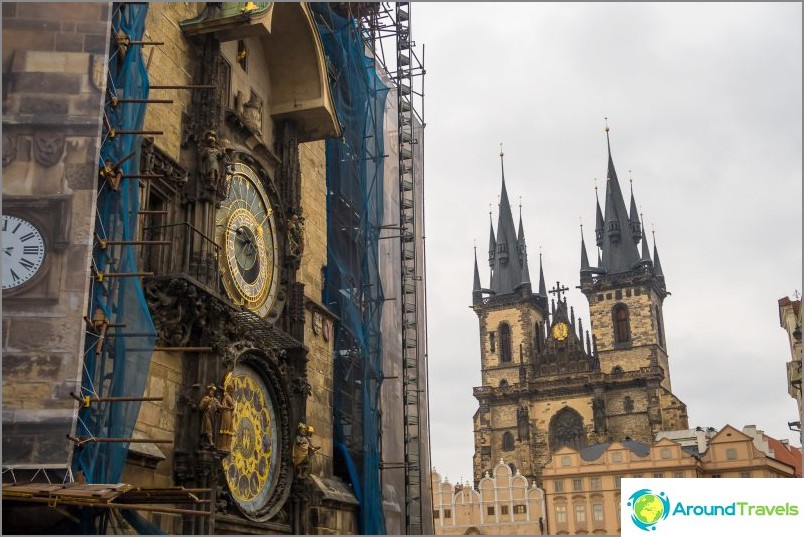
Old town hall
Vysehrad
Vysehrad, in terms of its scale and scope, is only slightly inferior to Prague Castle. The castle on a hill above the Vltava, built in the 10th century, contains a lot of interesting and historically significant objects, which will take more than one hour to see..
Vysehrad is located on the outskirts of Prague and therefore does not suffer so much from crowds - this is one of the bonuses for those who manage to get out of the epicenter of Prague's beauties. The place is interesting, impressive, and very atmospheric.
Petrin Hill and Eiffel Tower in Prague
Petřín Holm is a huge park in Prague, and not on the outskirts of the city, but closer to its central part. Once a stone was mined here to build a city, but now there is an apple and pear orchard, where it is allowed to harvest fruits during the season. You can climb the hill using a funicular, and from its height you can enjoy an excellent panoramic view of Prague.
True, for this you still need to climb a copy of the Eiffel Tower, which was built on the top of the hill.. More about the attraction.
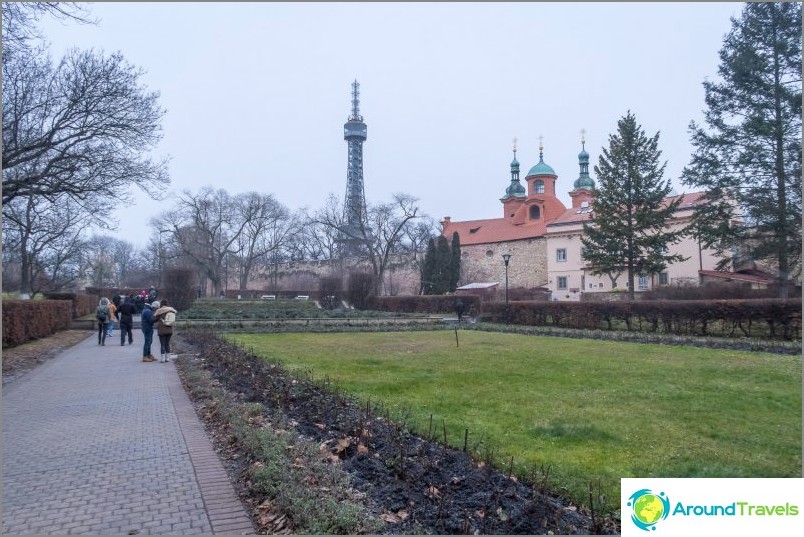
Eiffel Tower in Prague
Prague Zoo
The zoo, built in the Troy Basin, underwent a long development from a private menagerie in the 16th century to a world-class attraction included in the TOP-10 zoos in the world. From 1931 to the present, the zoo has had only two truly serious development disasters..
The Second World War and the largest flood in 2002, after which the zoo had to be rebuilt virtually from scratch. The place is very exciting, worthy of at least one visit and, in principle, perfectly diversifies a family vacation with children.. More about the attraction.
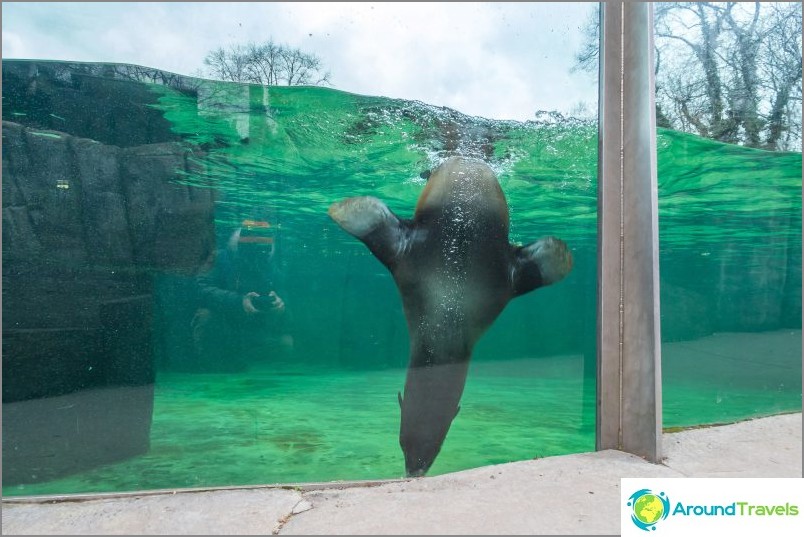
Prague Zoo
Strahov Monastery
The monastery in Hradcany has functioned since about 1143, when «white canons» (representatives of the Roman Catholic order, which was organized in France). Nowadays it is considered one of the oldest monasteries of monks-premonstrants, and they had about 1300 monasteries..
During the reign of Joseph II, the monastery was almost closed, like a number of others who were unable to justify their usefulness to society. The public library within the walls of the monastery saved it from closure and still surprises the modern tourist with its beauty..
Josefov quarter
A very old area of the city that preserves the history of both the first Jewish settlers in Prague and the remnants of the ghetto from the Second World War. The quarter is named after Emperor Joseph II, whose reforms greatly simplified and improved the life of Jews, who were not particularly welcomed in the rest of Europe at that time..
There are several synagogues, an old cemetery and other historically significant objects in the area. The place is interesting for its atmosphere and if you arm yourself with an intelligent history guide, you can usefully spend time walking around the quarter.
Dancing House
Along with historical monuments, a unique building made in the style of deconstructivism happily adjoins - «dancing House». This masterpiece of modern art was erected on the site of a neoclassical building that was destroyed in the American bombing. An amazing, strange, but very photogenic example of architectural genius. More about the attraction.
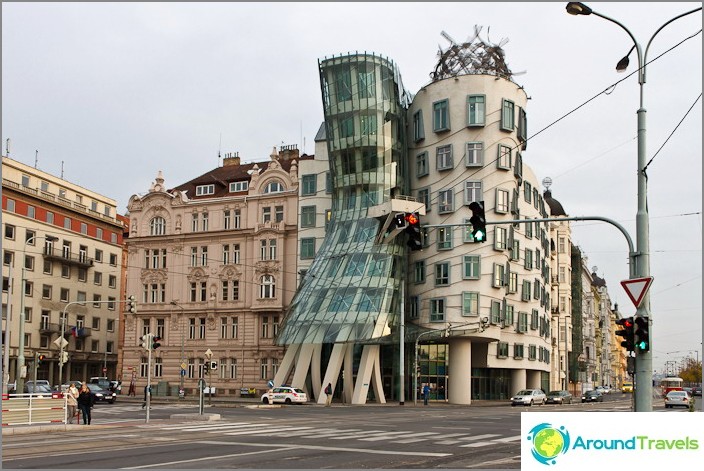
Unusual building in the center of Prague
National Theater
The Prague National Theater is considered the largest in the Czech Republic. It opened in June 1881, and a month later it suffered from a strong fire, after which all the people of the Czech Republic raised funds for restoration - it is the unity of the nation that is expressed in the inscription above the stage «Nation - to itself». A very impressive building, with a rich interior with gilding - the pride of Prague and the whole Czech Republic.
Křižkov fountains
An unusual illuminated fountain, built at the end of the 19th century under the guidance of the Czech inventor and engineer, František Krzyzek. At that time, this fountain made a splash among the inhabitants of Prague, as something unusual and incredibly futuristic. Nowadays, you won't surprise anyone with dancing and singing fountains, but the Krzyzhkov fountains are a rare exceptional case..
John Lennon Wall
You could see something similar on the Old Arbat in Moscow. Only in contrast to the Moscow lane, where there is little space, dirty and unwashed punks, it is pleasant to stroll around the Prague Lennon Wall. The wall is located in front of the French Embassy in Velkopřevorska Square.
Typical of street art, an iconic spot for Beatles fans, dingy under the wall. On the street near the wall you can often see street musicians, artists and magicians. More about the attraction.
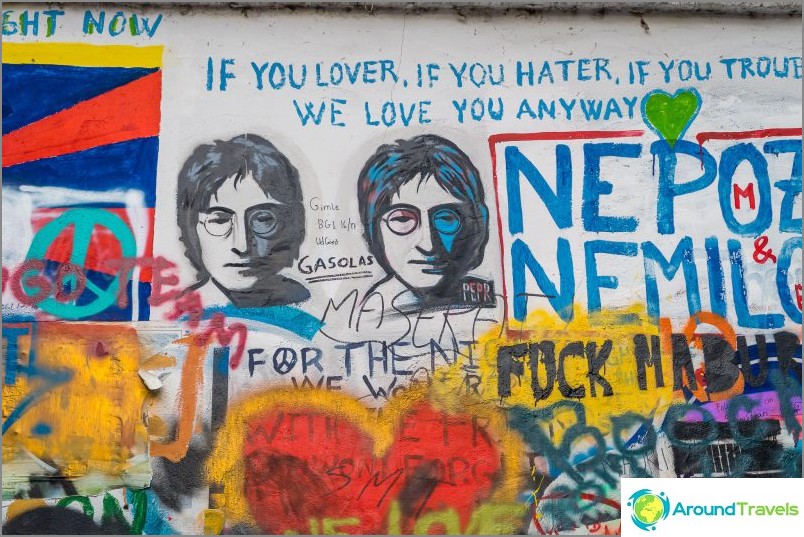
John Lennon Wall
Letné Gardens and Prague Metronome
The Letenské (Aerial) Gardens of Prague is one of the largest gardens in the city, covering an area of about 25 hectares. It invariably attracts crowds of tourists with its charm and silence. A separate landmark has been built in the middle of the garden - the Havana Pavilion, a building with an abundance of forged details and intricate ornamentation.
There is also the Brussels Pavilion, where contemporary art exhibitions are held all year round. One of the examples of this art is the Prague Metronome, which is not the most beloved building by Prague residents. A twenty-meter piece of iron rises above the observation deck overlooking the Vltava, on the site of the former monument to Stalin. More about the attraction.
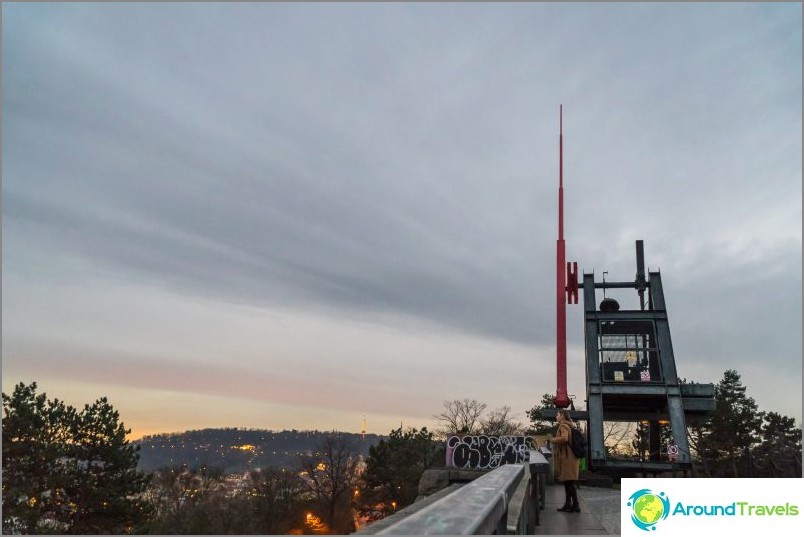
Prague Metronome in Letcké Gardens
Other sights of Prague
Wenceslas Square
Wenceslas Square is a historical and cultural landmark of Prague, earlier it played the role of the Horse Market, later it was a square for gathering people in honor of eminent persons or for meeting members of political parties.
Important historical events in the Czech Republic are associated with the square, although if you look at it without being tied to politics, then Wenceslas Square is a beautiful place in itself. The square looks like a wide boulevard, lying slightly inclined and in the upper part of it there is a statue of St. Wenceslas. More about the attraction.

Wenceslas Square
Aquarium Sea World in Prague
This is not a historically significant place, but by the number of requests on the Internet and by the number of visits, we can safely conclude that the Prague Oceanarium is one of the top attractions of the city. A very interesting and beautifully designed place with various representatives of the marine world, oriented to all age groups, a real family vacation. And this is very useful when children get tired of looking at towers and bridges..
Tyn temple
The Tyn Church or the Church of the Virgin Mary in front of Tyn is a still functioning church, with a characteristic Gothic style and baroque elements in the exterior. It was built on a grand scale and for a very long time: from 1339 to 1551, after which the church acquired the status of the main Hussite temple.
It was badly damaged in a fire in 1679, due to which it underwent several major changes. The remains of several dozen people are buried in the temple, among whom there are both unknown and eminent persons..
Kampa island
Kampa Island is located near the Charles Bridge, between the Vltava River and the Čertovka stream. The stream is man-made and very old: it was dug in the 12th century specifically to turn the mill wheel of one of the numerous mills of that time on the island. During the Middle Ages, the entire island was covered with gardens, but to this day only one English park on the southern edge of the Kampa has survived. Amazingly cozy place for walking.
Mala Strana
From the 13th century until the First World War, only Germans lived in Mala Strana and this territory was not considered part of Czech Prague. Here you will find a high concentration of Baroque architecture buildings.
It is in Malá Strana that most of all the palaces in Prague are located (and the total number of Prague palaces is 55). One of those neighborhoods that require a lot of planning to explore - attractions at every turn.
Prague Loreta
In the Italian city of Loreto, there is one of the greatest Christian shrines - the Basilica of Santa Casa or the House of the Virgin, where the remains of the house are kept, in which the Virgin Mary learned the prophecy about the birth of the Savior, and in which she lived until the death of Jesus.
It is believed that one of the parts of that Holy Hut is located in the Prague Loreta.. «Pearl in a casket» - a magnificent architectural complex, which in its scope surpassed even the Italian Loreta, in the image and likeness of which this place was conceived.
Powder tower
In 1475, construction began on the tower, which was later named the Powder Tower. However, between these two events, almost four hundred years - the construction was abandoned and resumed only in 1870, after which the tower in the Gothic style began to be used first for holding ceremonies of the royal court, and later - for storing gunpowder.. More about the attraction.
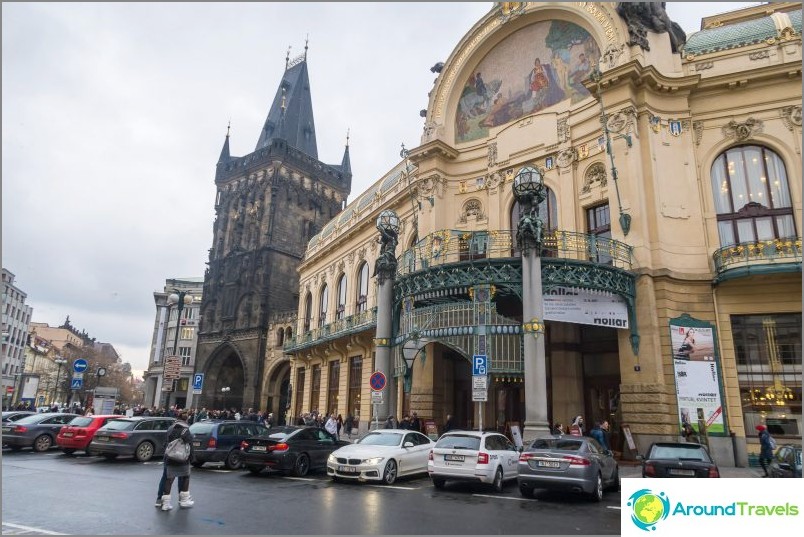
Powder Tower in Prague
Zlata street
Zlata Lane or Golden Lane is adjacent to the Prague Castle and is an independent landmark of Prague. In fact, these are rows of neat houses of various sizes and colors, which in the distant past played the role of official housing for the palace guards, and today they are just shops. The street attracts with its extraordinary cuteness, fabulousness, and local guides call the houses of Zlata Street - gingerbread. More about the attraction.
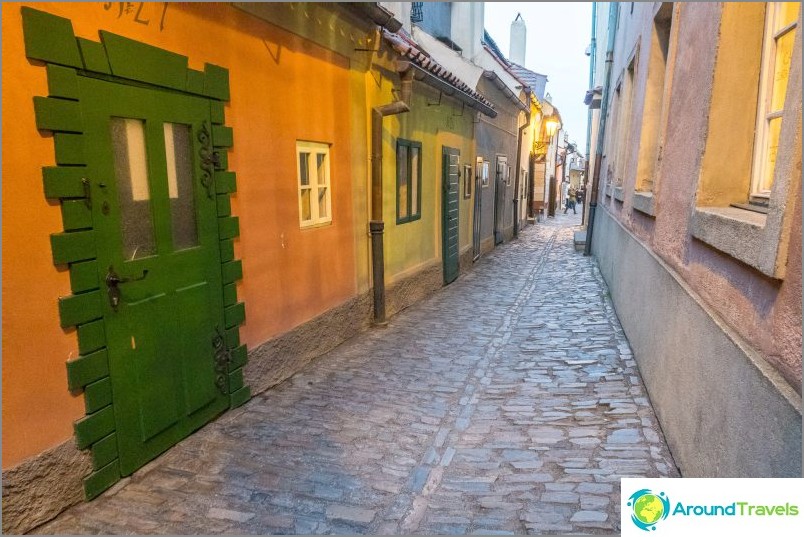
Zlata street
Lego Museum
The private museum of one Lego fan, which over time became so popular that it soon became the largest museum in Europe in terms of the number of exhibits presented in it. As they write on the museum's website, to create several Lego worlds.
Harry Potter, Star Wars, Indiana Jones, architectural landmarks and monuments of the countries of the world - in total, about a million Lego bricks were spent. Three floors of children's delight - great for family fun. More about the attraction.

Lego Museum in Prague
Toy Museum
Another children's place in Prague is the Toy Museum. One of the largest private toy collections in the world, which was launched after 1989. In the two halves of the museum, you will find a collection of old and rare toys, as well as several thousand Barbie dolls (!). Castles, toy cities, robots and doll houses are great places to entertain school-aged children.
Havel market
The fruit market of a small German settlement, according to some sources opened in 1232, turned into one of the quarters of the Old City in half a century. Today it is the largest, very popular and crowded tourist market with souvenirs, sweets, and other related products of the tourist area. Prepare to leave a ton of money here. Special chic - getting to the market during the Christmas market.
Charles Square
Charles Square was founded in 1348, and at the dawn of its history it served as a livestock market. Now it is the historical center of the Nove Mesto quarter. Here, nearby, within walking distance are located: a fountain, various interesting buildings, temples, sculptures and monuments, as well as an English park. Charles Square in Prague is very interesting in terms of a leisurely walk after the streets and narrow alleys.
Kafka Museum
A two-storey building near the Charles Bridge. In the museum you will find photographs from the life of Kafka, his friends, acquaintances, women, his correspondence, drafts, drawings, and all this in the gloomy interior of a former brick factory. The place is mysterious, interesting for fans of Kafka's work, but definitely not for a mass tourist. It is noteworthy that Prague, in which Kafka lived all his life, became the last and final of the three places where the museum's exhibits were exhibited.
Church of St. Ludmila
The grandiose Catholic church of St. Ludmila, in the neo-Gothic style, which is still active today. Founded in 1888, completed in 1893 and dedicated to the very first Czech saint in the history of Christianity, the Great Martyr Ludmila of Czech. Ludmila is considered the patron saint of the Czech Republic, the intercessor of women and teachers, she made a huge contribution to the development of Christianity and was strangled by pagans during prayer at the age of 61. More about the attraction.
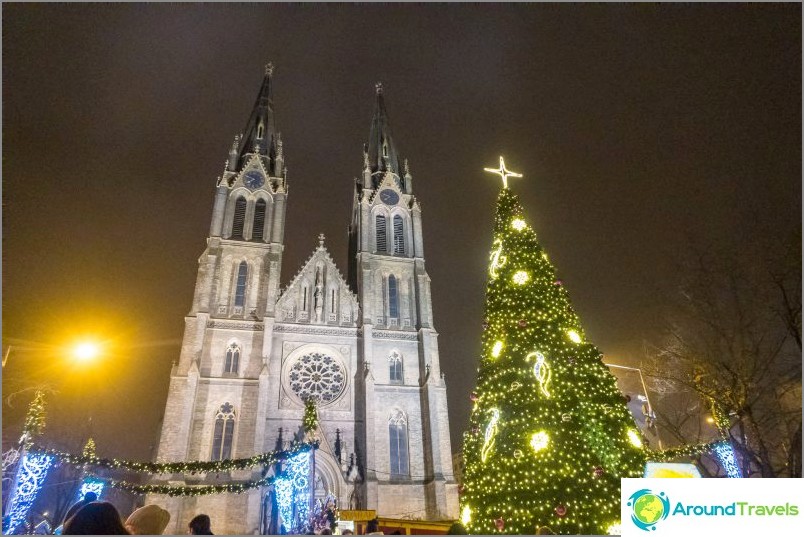
Church of St. Ludmila
Old royal palace
The Old Royal Palace is one of the objects of the Prague Castle, which was built at the end of the 9th century, and over time has undergone many additions, external changes and state purposes. Today it is a unique building that carries the memory of the Romanesque style (basement of the palace), Gothic (Vladislav Hall) and the Renaissance.
Hradcany
In general, Hradcany is a whole district of Prague, in which hundreds of historical and cultural attractions are located. The most famous of which are: Prague Castle, Hradcanska Square, Archbishop, Sternberg, Martin and Tuscany Palaces, Mariana Column, Hradcany Town Hall, Prague Loreta and others. Hradcany itself is like a huge museum, which will take a lot of time to see.
Old castle stairs
More than two hundred stepped meters between high walls that connect the quarters of Hradcany and Mala Strana. There is an excellent observation deck at the top of the old castle staircase. At the bottom of the stairs, you will find Wallenstein Gardens with its pink chestnuts, ponds and backwaters. Great walk and ankle workout that carries over unnoticed thanks to the attractions along the way. More about the attraction.
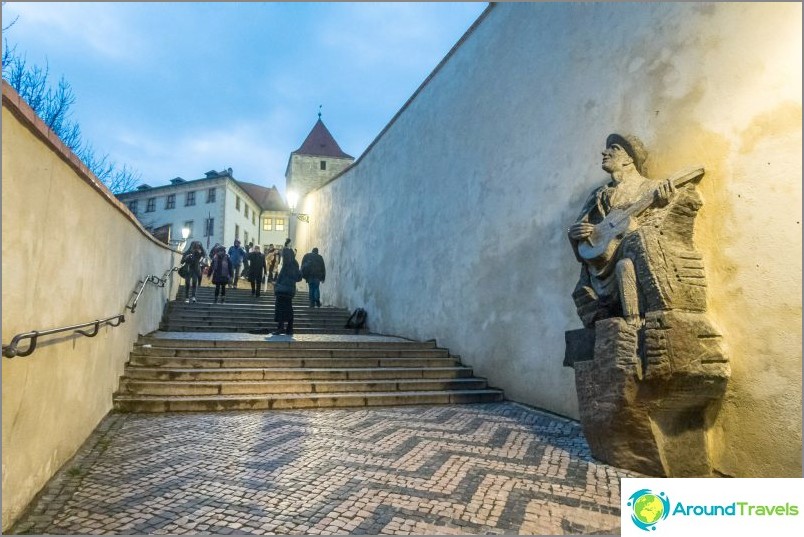
Old castle stairs
On the map
Prague landmarks
Attractions in Prague:
Moreover, Prague is a traditional center of European culture. Various international events are held here:
- festivals «Prague spring» and «Prague autumn»;
- festival of gypsy art;
- organ music festival and many others.
The presence of a huge variety of museums, theaters, concert halls and other cultural and entertainment centers make the city a favorite destination for thousands of tourists from all over the world. And it will certainly not be difficult for you to decide what to see in Prague.
